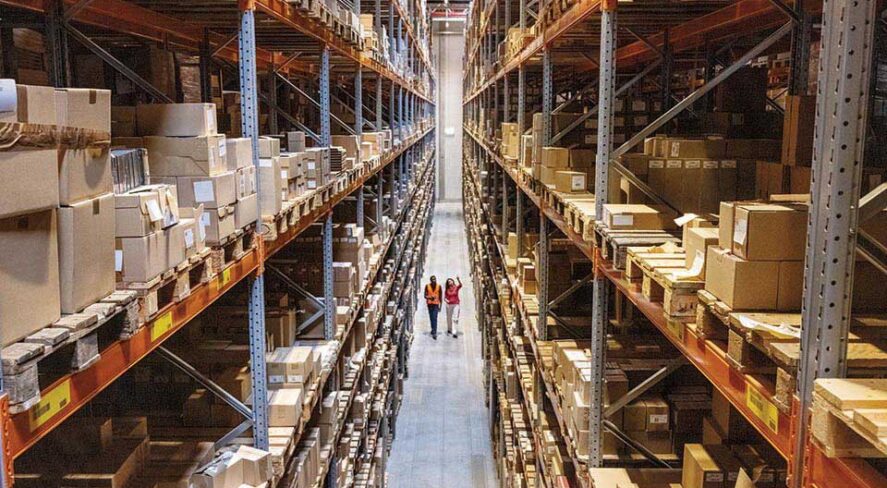Surveillance and Beyond: How Autonomous Indoor Drones Address Security and Operational Challenges

The security industry finds itself at the heart of a technological renaissance. Indoor drones, in particular, herald a new era of security solutions. These aerial devices are redefining the boundaries of surveillance and safety in real time, showcasing the fusion of technology and practical application in meeting today’s security challenges.
The Evolution of Indoor Drones

Drones have evolved significantly from rudimentary, manually-operated devices to highly sophisticated, autonomous systems that embody the pinnacle of artificial intelligence (AI) integration in security operations. State-of-the-art drones now carry out complex security tasks with unparalleled precision and efficiency, a far cry from earlier, less reliable incarnations that were prone to navigational mishaps.
Equipped with cutting-edge algorithms and advanced sensor technology, indoor drones can autonomously analyze environmental data, make informed decisions and conduct surveillance without human intervention. This technological leap forward merges the precision of modern innovations with adaptability and problem-solving capabilities akin to human reasoning. It signifies a transformation in which drones move from peripheral players to central figures in comprehensive security strategies.
Navigating Economic Turbulence
In the current, unpredictable economic environment, the security industry faces unprecedented staffing challenges. Finding and retaining qualified security personnel has become increasingly difficult, as fluctuations in the market exacerbate already high turnover rates. The lack of a stable workforce has propelled the search for innovative solutions to the forefront of industry priorities. Indoor drones have emerged as a response to these challenges, offering a reliable and efficient alternative to traditional security staffing. These autonomous agents work tirelessly, unaffected by the economic pressures that complicate human staffing, providing invaluable consistency in a time of widespread uncertainty. By integrating indoor drones into their security strategy, organizations across many sectors can not only address immediate staffing challenges but also lay the groundwork for a more resilient and adaptable security infrastructure.
Warehouses and Logistics
In the complex and expansive environment of logistics and warehousing, indoor drones have become essential assets, navigating through aisles and over obstacles with precision. These drones ensure the security and accurate placement of every package and pallet, operating with a level of efficiency and reliability that traditional methods cannot match. They play an important role in maintaining order and safety, offering a sophisticated solution to the challenges of security surveillance. Their integration into warehousing operations marks a significant advance in how goods are stored and protected.
Self Storage Facilities
Indoor drones are transforming security and operational practices in self-storage facilities, where they patrol and monitor to ensure unit security and to identify unauthorized access. Beyond surveillance, these drones, powered by advanced AI, efficiently check unit occupancy and conduct maintenance inspections, pinpointing unsecured units and potential safety hazards. This dual functionality not only fortifies the facility’s security but also aids in the proactive management of space and maintenance issues, streamlining operations and safeguarding both customer belongings and the facility’s integrity in a single, efficient sweep.
Retail and Commercial Spaces
After the store closes and the lights are dimmed, indoor drones assume their vital role, patrolling the quiet aisles with efficiency and accuracy. They serve as important components of nighttime security operations, with their flights providing a vigilant presence that safeguards the premises. Their deployment demonstrates the evolving nature of security, where technology complements traditional methods, not just on the ground, but also in the air.
Office Spaces
In office environments, indoor drones offer a nuanced security solution, serving as adaptable cameras by day and autonomous guards by night. These drones navigate areas where traditional cameras cannot be installed, due to privacy concerns. Utilizing advanced AI, they can detect a range of anomalies, from potential fire hazards to compliance violations, such as missing safety equipment or Occupational Safety and Health Administration infractions. This dual functionality ensures comprehensive surveillance and safety oversight, illustrating drones’ capability to adapt to the specific needs of an environment while respecting privacy and enhancing overall security.
Critical Infrastructure
With high voltages and hazardous materials presenting significant risks, drones navigate through areas that pose dangers that are too great for human security personnel, providing a reliable layer of protection for the nation’s most critical utilities.
Bridging the Gap With Existing Systems
Indoor drones are able to integrate seamlessly with existing security systems, both cloud-based and on-premises. They can effortlessly connect with video management systems, Internet of Things devices and more through various interfaces such as dry contacts, web APIs and other protocols. This ease of integration means that drones can become an integral part of the security infrastructure without the need for extensive overhauls or replacements.
Drones can autonomously navigate and interact with other systems and can, for example, trigger alarms based on specific detections or initiate lockdown procedures in response to verified threats. This interoperability extends the utility of drones beyond mere surveillance, transforming them into proactive agents of security that enhance the capabilities of existing frameworks.
Indoor drones can be an effective countermeasure against both physical and cyber threats. On the physical front, they offer a versatile surveillance solution, capable of accessing and monitoring hard-to-reach areas without putting human lives at risk, while on the cyber front, they are secured with advanced encryption and cybersecurity measures, ensuring that the data they collect and transmit is protected against unauthorized access and other threats.
While drones have established their value across traditional sectors, emerging technologies and creative applications are pushing the boundaries of what they can achieve in security. The integration of drones with AI and machine learning is enabling autonomous decision-making, predictive analytics, and sophisticated threat detection capabilities that were previously unattainable. Additionally, the use of drones in emergency response scenarios, such as for disaster assessment, exemplifies their potential to not only observe but actively contribute to crisis management. Future innovations may also see drones collaborating with ground-based robots or leveraging augmented reality to provide immersive security training experiences.
The autonomous drone industry emphasizes safety through advanced collision-avoidance systems, privacy through strict data protection practices, and compliance by working closely with regulatory bodies. These proactive measures ensure that drones are a responsible and effective solution for modern security challenges.
Looking Ahead
The transformative power of indoor drones can be seen in diverse environments, demonstrating their broad impact on security and operational efficiency. At logistics centers in Nevada, for example, indoor drones have led to a 30 percent reduction in inventory discrepancies, while retail chains in California have experienced a 40 percent decrease in after-hours break-ins.
Innovations in AI, autonomy and collaborative operations hold the promise of further expanding drone capabilities. As the regulatory landscape evolves alongside public acceptance, drones are set to become even more integral to the security and surveillance infrastructure.
